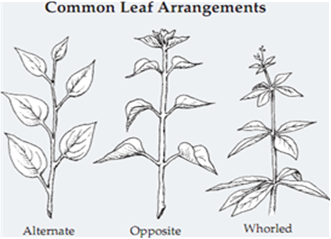Sponsor Area
Morphology of Flowering Plants
What is meant by modification of root? What type of modification of root is found in the:
(a) Banyan tree
(b) Turnip
(c) Mangrove trees
Modification of the roots means change in the root shape and structure to perform function other than absorption and conduction of water and minerals. Roots are modified to perform specialised functions like support, storage of food and respiration.
Roots and its modifications in various plants:
(a) Banyan tree
The banyan tree has prop roots. Prop roots are massive pillar-like adventitious roots arising from the aerial part of the stem. These roots grow towards the ground and provide support to the tree.
(b) Turnip
The tap roots of turnip swell and help in the storage of food.
(c) Mangrove tree
The roots modification found in mangroves are pneumatophores. The roots grow vertically upwards from the soil for the absorption of oxygen from the atmosphere as the soil is poorly aerated
Justify the following statements on the basis of external features:
(i) Underground parts of a plant are not always roots.
(ii) Flower is a modified shoot.
(i) Underground parts of a plant are not always roots: There are certain plants like potato , ginger turmeric in which the stem is modified for the storage of the food and is found underground. In these, the stem becomes swollen due to storage of food. The potato bears eyes, which are subtended by a leaf scar. Basal leaves in onions become fleshy because of the accumulation of food and are found under the ground. Since stem, leaves can be modified to be found underground, we can say that the underground parts of the plant are not always roots.
(ii) Flower is a modified shoot: The shoot apical meristem changes to floral meristem. The axis of the stem gets condensed, while the internodes lie near each other. The apex produces different kinds of floral appendages laterally at successive nodes of the leaves. Instead of leaves, various floral appendages arise from the node. Therefore, the flower can be said to be a flower is a modified shoot.
How is a pinnately compound leaf different from a palmately compound leaf?
|
Pinnately Compound Leaf |
Palmately Compound Leaf
|
|
The leaflets are attached to the common axis, called rachis.
|
The leaflets are attached at a common point on the leaf stalk.
|
|
For example - neem |
For example- silk cotton |
Explain with suitable examples the different types of phyllotaxy.
Phyllotaxy refers to the pattern or arrangement of leaves on the stem or branch of a plant. It is usually of three types:
(i) Alternate: In alternate phyllotaxy, a single leaf arises from the node of a branch. This type of phyllotaxy is observed in the sunflower, mustard, and peepal.
(ii) Opposite: In this type the plants has two leaves arising from the node in opposite directions. It is found in guava.
(iii) Whorled: Plants with whorled phyllotaxy have three or more leaves arising from the node. It is found in Alstonia.
Sponsor Area
Mock Test Series
Mock Test Series





